2nd-Grade Reading Lesson Plans
What is Rooted in Reading?
Rooted in Reading is a reading curriculum that was created to enhance the Language Arts instruction in 1st, 2nd, and 3rd grade classrooms. Teachers read purposefully-selected picture books to their students each week. Students are actively engaged in listening to and discussing each text throughout the read-aloud. Before, during, and after the read-aloud, teachers guide book conversations through thought provoking discussion questions. With Rooted in Reading, the learning process continues through targeting specific skills and standards as students interact with this text all week. Activities for each text have been designed to assure students are actively thinking, making connections, and responding to the text in a meaningful way. This reading curriculum focuses on deepening comprehension, developing and expanding vocabulary, and integrating language skills with the use of a mentor text.
We are going to take a look at our 2nd Grade Reading Curriculum and 2nd Grade Lesson Plans so that you can see what it’s all about!
The Mentor Text
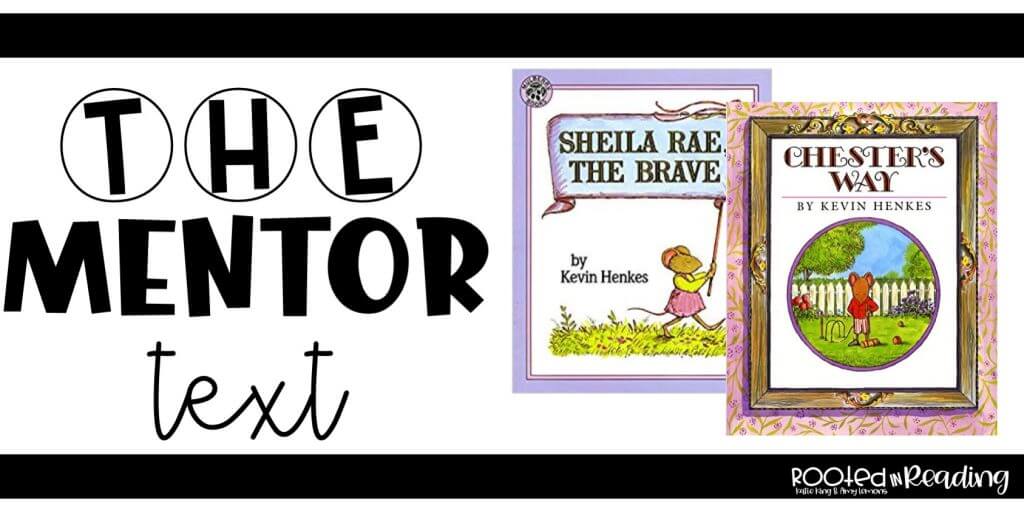
All of our 2nd grade reading lesson plans, as well as the other grade levels, focus around a mentor text for the week. You might be thinking… what are the benefits of using picture books all throughout my 2nd grade reading curriculum? Well, I’ll give you 10 reasons to fit this into your reading lesson plans!
- Students make deep and meaningful connections to the books.
- Students experience growth in their background knowledge.
- Students’ interest in reading increases.
- Using a read-aloud allows an opportunity for students to reflect.
- Picture books provide a safe space for classroom discussions.
- Interactive read-alouds enhance and enrich the classroom community.
- It allows teachers to model effective reading strategies in a controlled area.
- Picture books provide a non-threatening environment where reluctant and skilled readers can flourish.
- .Reading aloud a picture book builds a bridge between language and reading. The read-aloud shows students how language works in context.
- Incorporating read-alouds in the classroom exposes students to multiple genres that they may not gravitate towards on their own.
The Standards Alignment

Like each of the grade levels, Our 2nd Grade Rooted in Reading curriculum focuses on one or more comprehension standards each week. The standards structure for each unit are outlined in an easy to understand overview for the entire Rooted in Reading curriculum. We also spiral comprehension skills throughout the year so that students have ample exposure and practice. Rooted in Reading does not teach the skills in isolation. The read-aloud serves as a mentor text throughout the week where the students are analyzing the text, making connections, and digging deeper with comprehension by participating in intentional conversations pertaining to the read-aloud.
The Lesson Plans

Teachers are provided with a set of lesson plans , like the 2nd grade reading lesson plans pictured above, that includes activities and resources for comprehension, vocabulary, and grammar. All of the components are focused around one main read-aloud that is introduced at the beginning of the week, reread throughout the week, and referred to during all of the lessons.
The Comprehension Focus
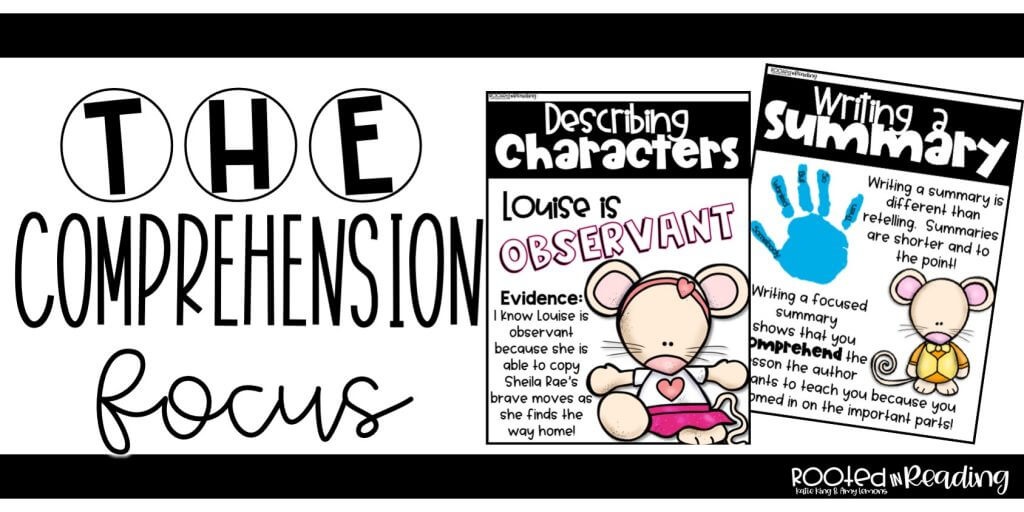
Each week the lesson plans will guide the teacher on how to introduce, model, and teach the main comprehension focus. The main comprehension focus will revolve around making connections, writing a summary, character traits, and making predictions. For example, students of the 2nd grade reading curriculum are describing Louise’s character and summarizing the plot from the book, Sheila Rae, The Brave and Chester’s Way by Kevin Henkes. Our reading curriculum spirals these skills throughout the year so that students are constantly being exposed to the standards.
The Student Activities
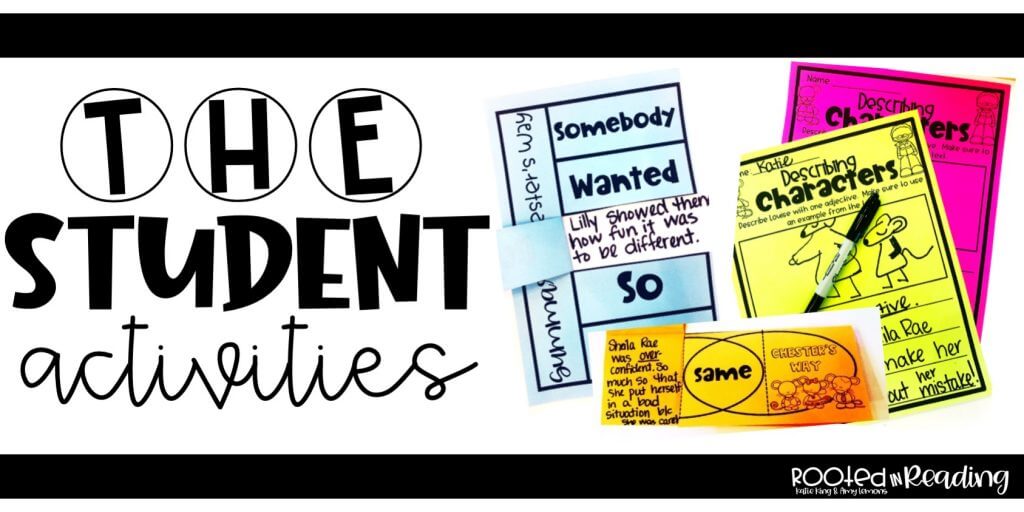
Students practice those reading skills each week throughout the use of different graphic organizers, response sheets, flap-books, etc., such as the 2nd grade reading lesson plan activities in the image above, which feature our summarizing flap up and describing characters printable. Students use these activities to expand their critical thinking skills as they are digging deep into the text.
The Interactive Lessons
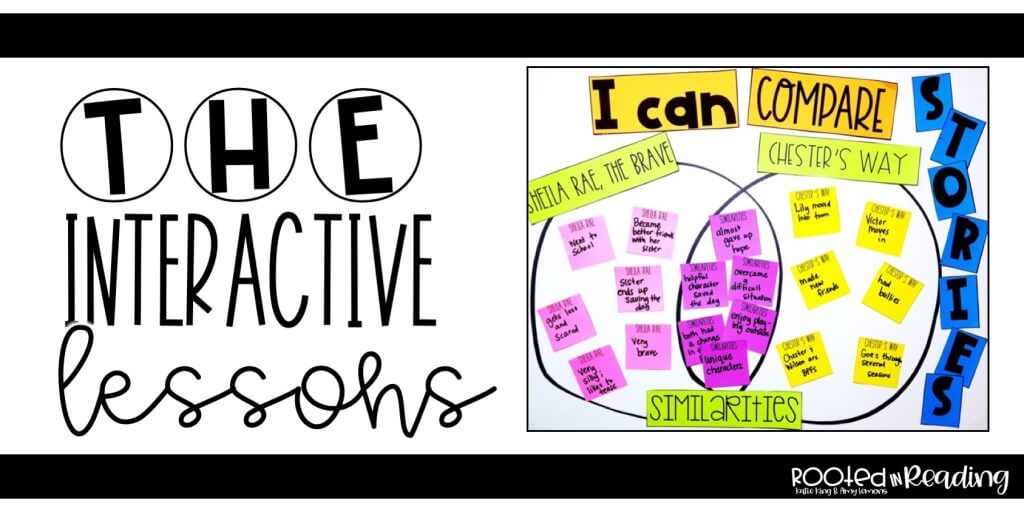
We don’t stop at lesson plans and suggestions, we also implement interactive lessons and discussions in our reading curriculum. Here you can see that 2nd grade students will compare two stories written by the same author. The teacher facilitates the discussion, but the students are actively engaged in the conversation. By getting the students actively engaged in the discussion, teachers can work through any questions and help students to identify key comprehension components.
The Comprehension Practice

In our Rooted in Reading curriculum, we offer two reading passages each week so that students are held accountable for their knowledge of skills. Students are able to read a nonfiction and fiction passage that relates back to the skill, theme, or lesson. Students will answer questions around story meanings while generating personal connections to the text. This also allows teachers to assess students on how they respond to independently read texts.
The Comprehension Assessment
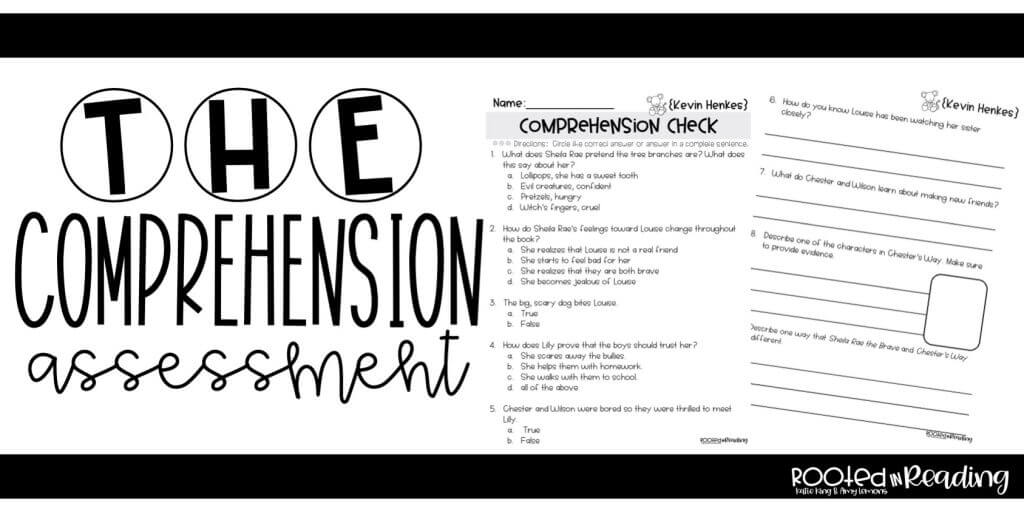
Students are assessed each week on the mentor text and skills. In our 2nd grade reading curriculum, students are tested on their comprehension of the read-aloud AND on their knowledge of the focus skill. Students answer multiple choice and written response questions so that teachers can truly see if their students are mastering the skills each week.
The Nonfiction Connection

One unique thing about our reading curriculum is that each week we pair a nonfiction text with the mentor text. These nonfiction readers can be found right within the weekly lesson plans and are written on a level that students can understand. For example, In our 2nd grade reading curriculum you can see the 2nd grade readers are learning about the author of the mentor text. They learn important facts and details about the author which helps them to better understand why he wrote the books that they read in class. By incorporating the nonfiction readers into the reading lesson plans, we provide teachers with an opportunity to use contextual information for summarizing and reiterating key skills from the mentor text.
The Vocabulary Practice
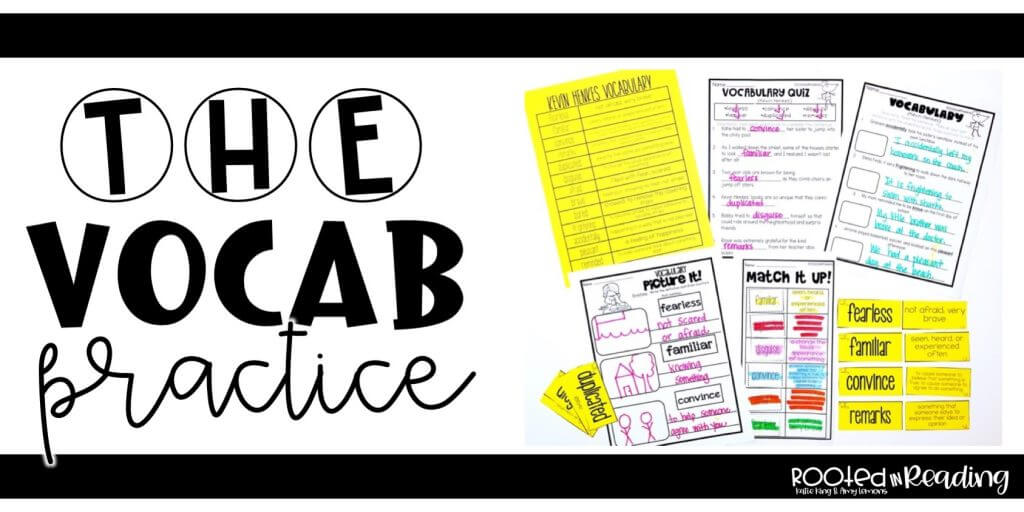
Integrating vocabulary into reading lessons is crucial. Did you know that students cannot possibly comprehend a story if they do not understand the vocabulary within the text? Our 2nd grade reading lesson plans guide the teacher with words to focus on, activities to practice the meaning of those words, and assessments that show their understanding of the words introduced. Some examples of vocabulary practice we offer in the 2nd grade reading curriculum include vocabulary cards, vocabulary bingo, vocabulary match up, and other fun activities.
The Reading Response

We believe that when we teach ELA skills through skill and drill, it is almost impossible to pull in all the previous knowledge in an engaging and timely manner. Picture books allow us to accomplish what we need to in our instruction while allowing students to enjoy the process. In our lesson plans each week students are given the opportunity to respond to the text. They may complete a directed drawing or writing craft that is always paired with a written response. In the examples from our 2nd grade reading lesson plan, you see both a directed drawing of the main characters and a template for a written response regarding each character from the book.
The Grammar Activities
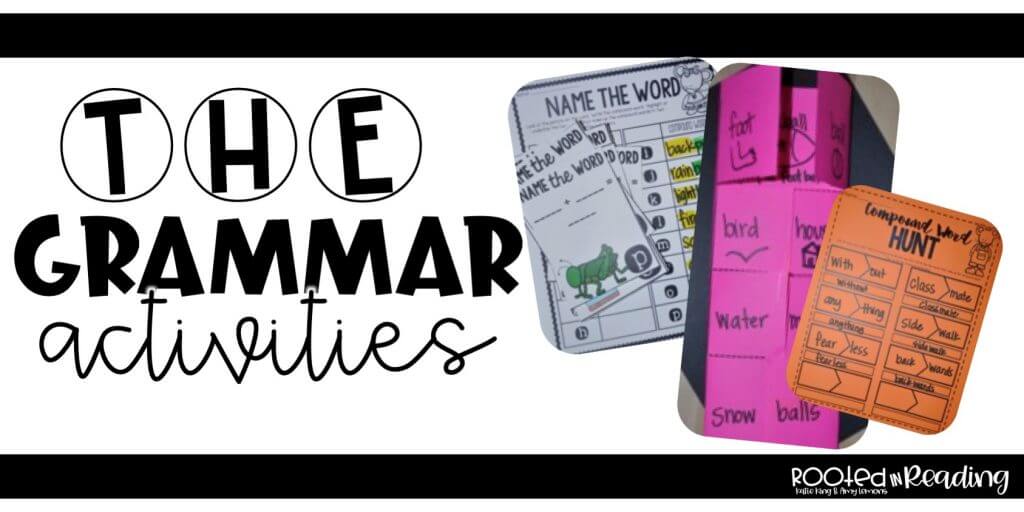
We know how hard it is to fit grammar into your lesson plans each week. That’s why we always include grammar in our reading curriculum. We incorporate fun and engaging activities like flap books, spin a sentence games, word puzzles, fun character and animal themes, and more. In the example, our 2nd grade reading lesson plan includes compound word practice via a word hunt of those found in the story. Students are able to practice their grammar and language skills in a meaningful way because all of the activities tie back to the story in some way.
The Mentor Sentence
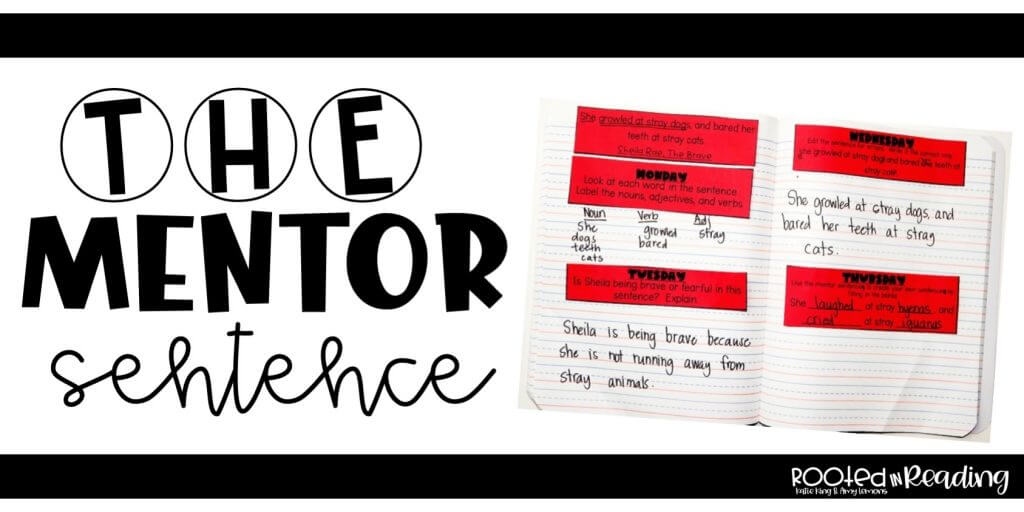
New to our 2nd Grade Rooted in Reading Curriculum is The Daily Deep Dive. Our lesson plans focus on one sentence from the mentor text each week. Throughout the week students are engaged with that sentence in what we call the daily deep dive. They are locating the parts of speech, identifying vocabulary words, thinking about the meaning of the words, and more. The mentor sentence allows students to put everything together with just one sentence: comprehension, grammar, and vocabulary.
To see all of our 2nd Grade Rooted in Reading curriculum and lesson plans click –> HERE


